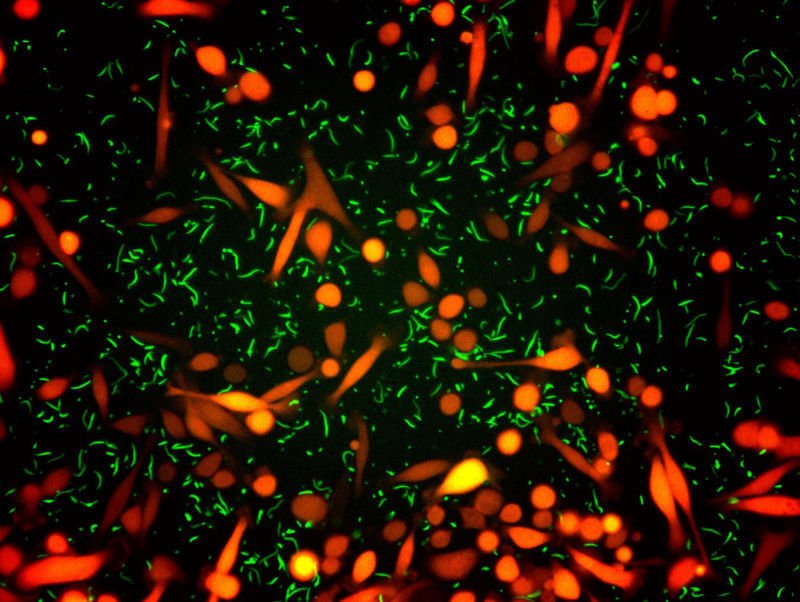Of all the kinds of bacteria, some are charming and beneficial, others are malicious and dangerous—and then there are the ones that are just plain turds. That’s the case for Mycoplasma hyorhinis and its ilk. Researchers caught the little jerks hiding out among cancer cells, gobbling up chemotherapy drugs intended to demolish their tumorous digs. The findings, reported this week in Science, explain how some otherwise treatable cancers can thwart powerful therapies.
…
[Lead author Ravid] Straussman and his colleagues got a hunch to look for the bacteria after noticing that, when they grew certain types of human cancer cells together in lab, the cells all became more resistant to a chemotherapy drug called gemcitabine. This is a drug used to treat pancreatic, lung, breast, and bladder cancers and is often sold under the brand name Gemzar.…
Looking closer, the researchers noticed that some of their cancer cells were contaminated with M. hyorhinis. And these bacteria could metabolize gemcitabine, rendering the drug useless.
…
To see if this may be a real problem in humans, the researchers gathered 113 cell samples from human pancreatic cancers. [..] Of the 113 cancer samples, 86 had signs of bacteria present—mostly Gammaproteobacteria—while only three of the 20 non-cancerous samples had bacteria.
…
The role of bacteria in drug-resistant cancers and the potential for using antibiotics with chemotherapies “merit additional exploration,” the authors conclude.
The GLP aggregated and excerpted this blog/article to reflect the diversity of news, opinion, and analysis. Read full, original post: See jerkface bacteria hiding in tumors and gobbling chemotherapy drugs































